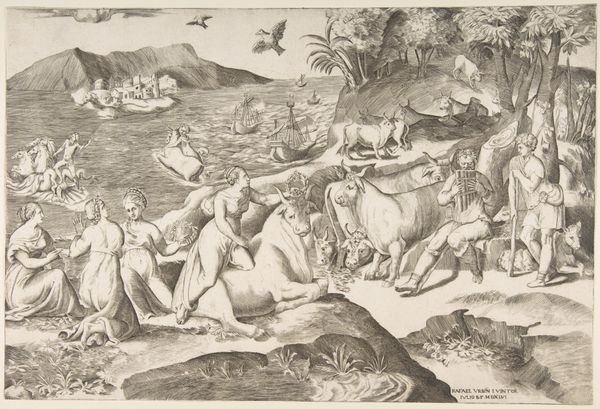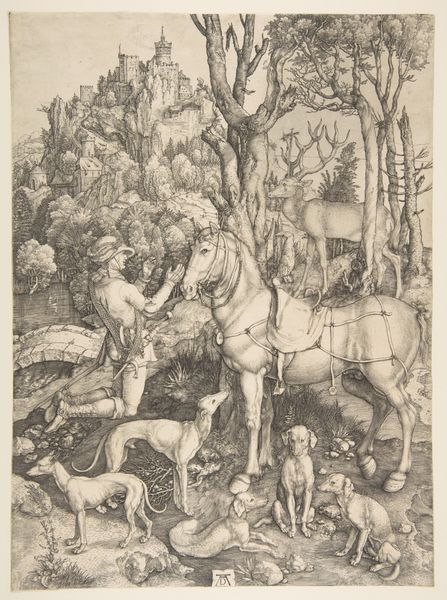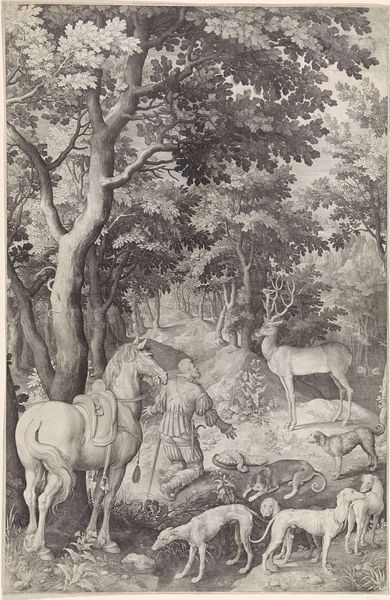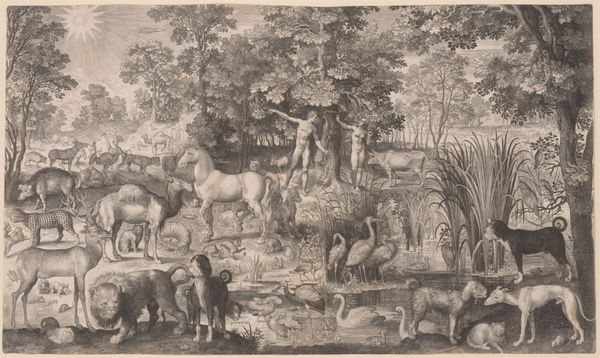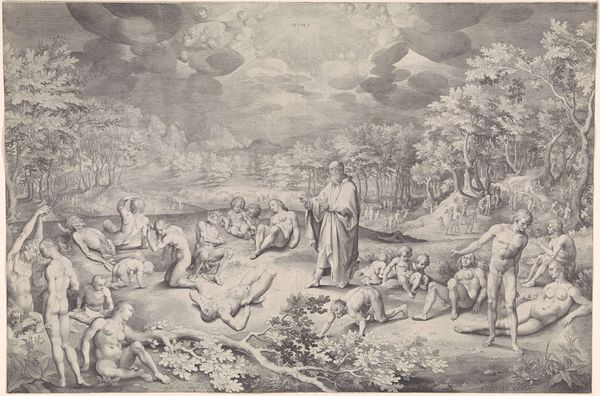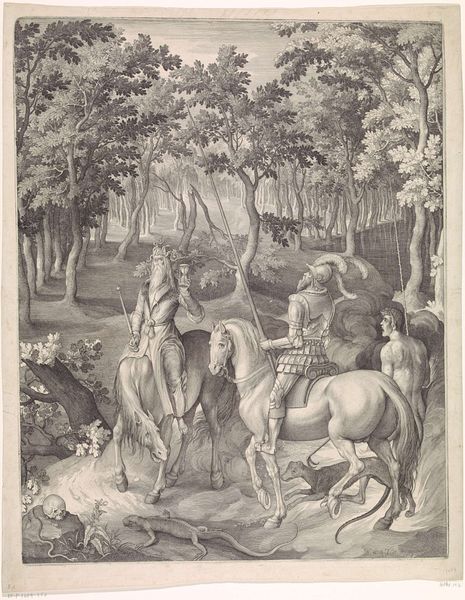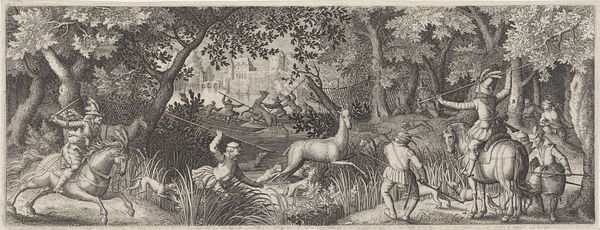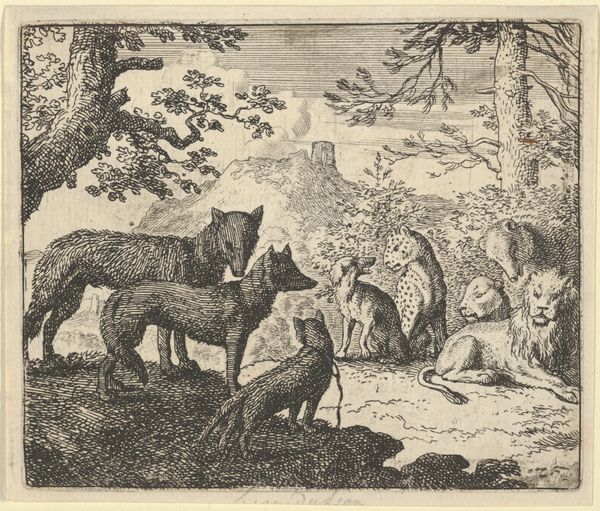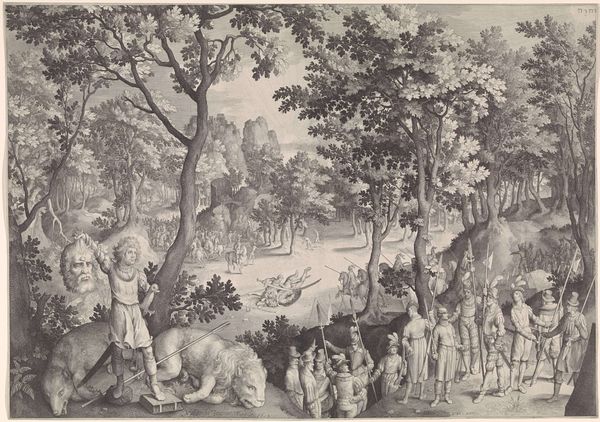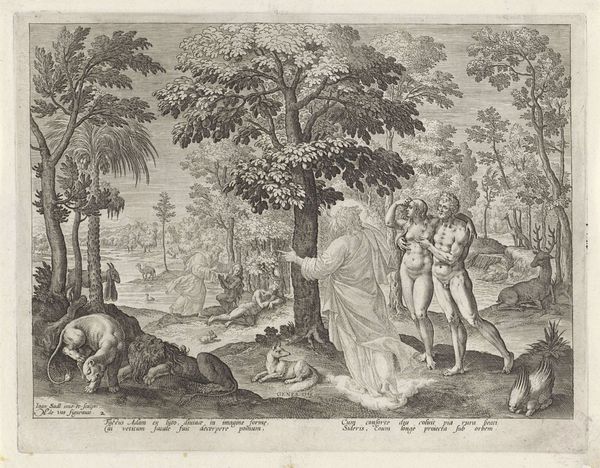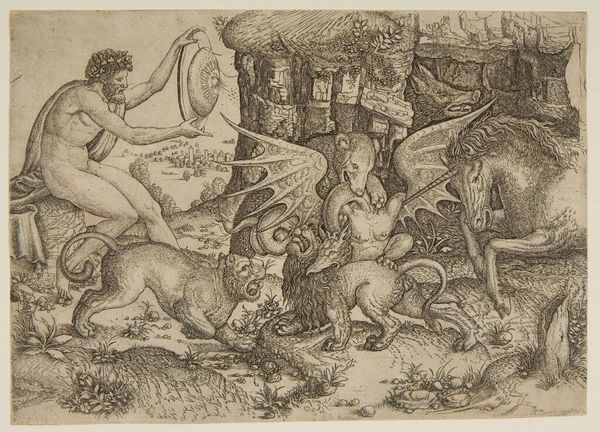
drawing, print, engraving
#
drawing
#
baroque
# print
#
pencil sketch
#
landscape
#
charcoal drawing
#
figuration
#
charcoal art
#
pencil drawing
#
line
#
history-painting
#
engraving
#
pencil art
Dimensions: height 388 mm, width 521 mm
Copyright: Rijks Museum: Open Domain
Curator: Here we have Nicolaes de Bruyn’s “Annunciation to the Shepherds,” an engraving from 1621, residing here at the Rijksmuseum. Editor: What strikes me first is the almost frenetic energy. Look at how many figures are crammed into the composition – angels, shepherds, animals! It's overwhelming and yet oddly captivating. Curator: Indeed, that density is a hallmark of Baroque art. What’s significant here, beyond the religious narrative itself, is how De Bruyn depicts social anxieties and religious fervor. These shepherds aren’t just witnessing a miracle, they're being confronted by divine authority, a moment rendered within the complex social structures of the 17th century. Editor: The labor certainly plays a crucial role here; these aren't idealized figures, but men and children likely engaged in demanding agricultural work. We can also analyze this from a production perspective - engravings being easily reproducible allowed the image to spread far and wide - therefore distributing the narrative amongst an extended audience. Curator: Absolutely, the reproductive quality democratized religious art to some extent. The clothing also gives indications on a potential social stratification of this scene. How might that be? Editor: From what I see the engraver wants the viewer to consider the economic value of animal and agricultural husbandry by contrasting it with the splendor of the holy apparition. Curator: I think so, yes. I think a central point that De Bruyn’s is making is of accessibility and divine intervention within everyday labour. In particular with shepherds, which by the early 1600s had acquired further meanings associated to the poor. Editor: A valuable observation. In closing, the material choices made by De Bruyn allowed his work to be distributed en masse throughout Europe which helped construct and deliver a clear-cut moral. Curator: I agree, understanding its material origins is pivotal for appreciating its legacy.
Comments
No comments
Be the first to comment and join the conversation on the ultimate creative platform.

